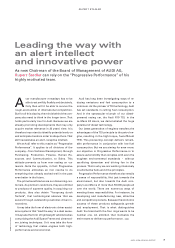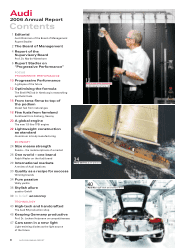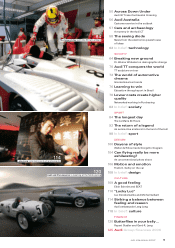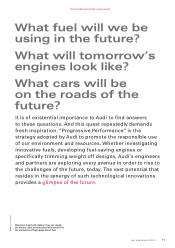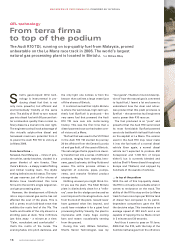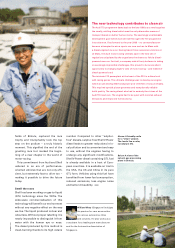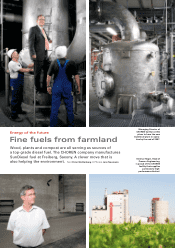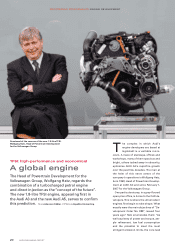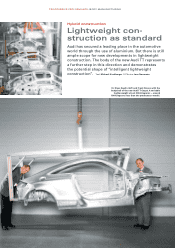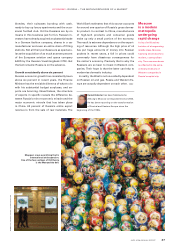Audi 2006 Annual Report Download - page 19
Download and view the complete annual report
Please find page 19 of the 2006 Audi annual report below. You can navigate through the pages in the report by either clicking on the pages listed below, or by using the keyword search tool below to find specific information within the annual report.
Below: A view of the
natural gas processing
plant in Bintulu.
Above: A friendly smile
for a “clean” project.
The locals live a calm,
nonchalant life.
The new technology contributes to clean air
The Audi TDI programme dates back to the late 1980s as a revolt against
the smelly, rattling diesel which was the only alternative means of
transport based on better fuel economy. The seemingly unattainable
development goal which Audi set itself brought the TDI programme
into existence. Fast forward to the year 2006 – no car manufacturer
has ever attempted to win a sports car race such as Le Mans with
a diesel-engined race car. Having taken three successive victories at
Le Mans, the Audi motor-racing veterans saw in the new set of
regulations stipulated by the organisers the chance to field a diesel-
powered race car. For Audi, a company which firmly believes in taking
on seemingly impossible challenges, this proved to be an excellent
opportunity to change people’s view of motor-racing – and indeed of
diesel-powered cars!
The intricate V12 powerplant at the heart of the R10 is a diesel unit
with racing genes. The ultimate challenge was to develop an engine
which would develop 650 horsepower and 1,100 Nm of torque reliably.
This required special piston geometry and exceptionally reliable
build quality. The racing diesel also had to embody the virtues of the
Audi TDI road cars. The engine had to be quiet with minimal exhaust
emissions and improved fuel economy.
William Whey (Singapore) indulges
his passion for cars as an author
for various automotive titles
and columns. He also works as a
consultant for a leading tyre manufacturer
and for the Automotive Association of
Singapore.
PHOTOS: SHELL
fields of Bintulu, captured the race
trophy and triumphantly took the top
step on the podium – a truly historic
moment. This signified the end of the
gruelling race but marked the begin-
ning of a new chapter in the world of
motor-racing.
This commitment from Audi and Shell
ushered in an era of performance-
oriented vehicles that are not only effi-
cient, but extremely fast to drive too –
making it possible to drive the future
today.
Smell the roses
Shell has been working on gas-to-liquid
(GTL) technology since the 1970s. The
wide-scale commercialisation of this
technology will benefit our environment
without any negative effect on the way
we live. The liquid produced is clear and
odourless. Without proper labelling it is
nearly impossible to distinguish it from
water with the human eye or nose.
The diesel produced by this method is
clean-burning thanks to its high cetane
number. Compared to other “sulphur-
free” diesels, sulphur-free Shell V-Power
diesel leads to greater reductions in lo-
cal pollution and is convenient and easy
to use, without the engines having to
undergo any significant modifications.
Shell V-Power diesel containing GTL fuel
is already available in a host of Euro-
pean countries. It is available on trial in
the USA, the UK and China in its pure
GTL form. Vehicles using this fuel have
benefited from lower fuel consumption,
reduced emissions, less engine noise
and better driveability.


